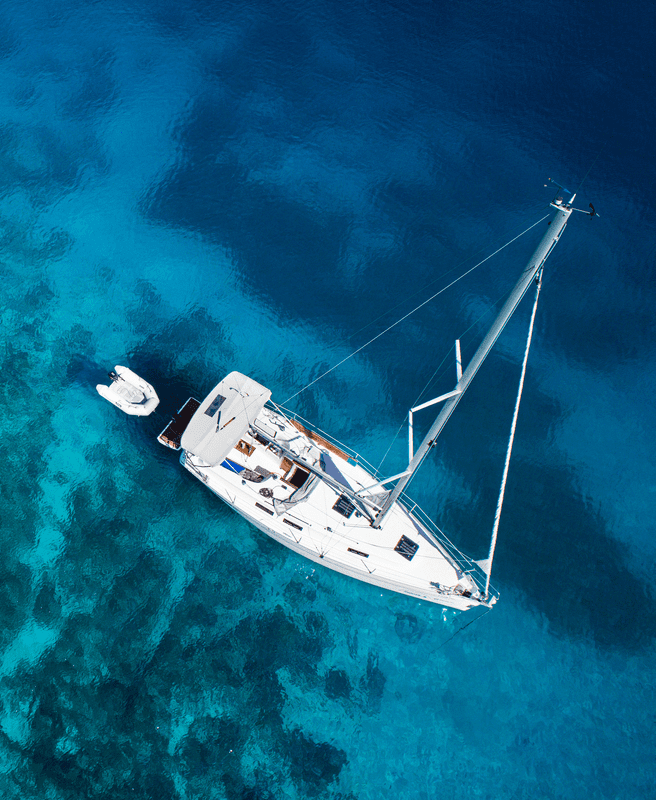Panama Citizenship and Second Residence: A How-to Guide
May 23, 2023
Panama has a relatively easy and straightforward process when it comes to becoming a resident, and Panama citizenship can be obtained after only 5 years.
You can get started with your Panama residency by making a bank deposit from your bank account and opening a business or making an investment.
The Panamanian constitution is friendly towards investors.
This guide is for getting permanent residency and citizenship in Panama if you are a citizen of one of the Friendly Nations.
If you’re not a citizen of the Friendly Nations, it’s important to note that the minimum investment needed to obtain a permanent residence in Panama will increase from $300,000 to $500,000 effective October 16th, 2022.
We hear people asking how do I become a resident of Panama?
Here’s the full how and why.
How It works
Time to Citizenship: 5 years
Economic Citizenship: No
Minimum Investment: Bank Deposit of US$5,000 and opening a business
Physical Presence: Minimal
Nationalities Allowed: “Friendly Nations”
Taxes and Costs
Cost of living: $1,500+
Income Tax Rate: 7-27%
Taxes Foreign Income: No
The Panama Passport
Visa-Free Travel Countries: 140+
Panamanian Passport Ranking: 28th
Can Visit Europe: Mostly
Can Visit the US: No
Why You Should Get a Panama Permanent Residency
- You can apply to become a Panamanian national after five years
- The process is inexpensive and straightforward
- Panama only requires a small bank deposit to qualify, and opening a business is affordable
- There are no minimum income requirements
- You do not need to relocate to Panama to maintain the Panama residency
- Panama speaks Spanish, an easy language to learn
- The country’s economy is constantly growing
Why Panama Citizenship?
Panama is a beautiful Central American country known for its excellent passport and great banking opportunities.
Panama is a Spanish-speaking country but is as good as it can get at English speaking.
Panama is also one of the freest countries in the world.
Once you obtain Panama permanent residency visa, which you will be eligible for after 2 years of having the provisional residency, you have the right to live and work there for life.
You can also obtain Panamanian citizenship.
Here’s how to get a Panama passport.
How to Get Second Citizenship in Panama
A lot of people are asking how to get citizenship in Panama, or how do I get a Panamanian passport?
The process is straightforward.
At first, the Panama Immigration office issued the provisional residencies by depositing $5,000 in a Panama bank and opening a Panama company.
After five years as a Panama resident, you and your family may apply for Panama citizenship according to the Panamanian nationality law.
There is no direct Panama citizenship by investment program.
If you see one, then it’s one of the fake citizenship by investment programs.
There is Panama’s Retirement Visa Retirees or people with lifetime annuities or pensions can qualify for the Panama retirement visa.
The Panama Reforestation Visa Program necessitates a $40,000 Investment and ultimately leads to Panamanian citizenship.
Can you have dual citizenship in Panama?
Dual citizenship in Panama is allowed as well, so you don’t need to renounce your current citizenship to become a Panama citizen.
Panama’s policy of jus soli – or “right of the soil” – means that children you give birth to while in Panama will acquire Panamanian nationality at birth.
About Panama
Panama is a country in Central America, situated between Costa Rica and Colombia. Nearly four million people live in Panama with more than one million living in the capital city of Panama City.
Panama is known for its famous canal which is also partly responsible for the country’s great economic growth since the early 1900s. Panama is a high-quality jurisdiction and has excellent banks.
Taxes and Cost of Living in Panama
Panama has a territorial tax system which means that only income and capital gains earned in Panama are taxed. Capital gains are taxed at 10% and the personal income tax rate is at 25%.
It is not required to live in Panama in order to maintain your second residency or work toward your second passport.
Nevertheless, it is possible to live for as little as $1,500 per month. Local food is cheap and plentiful, and transportation is affordable.
Buy real estate in Panama
Panama has the growth of a frontier market despite being relatively close to becoming a developed nation. This can be attributed to its openness to immigration, trade, and investment. A Panamanian passport is one of the easiest in the world to obtain and is also of good quality, allowing visa-free travel 140+ countries including Europe and all of Latin America.
The country also has a strategic location at the bridge of North and South America. The Panama Canal is one way that it directly benefits from this, bringing in a large amount of revenue and helping to facilitate trade not just in the region, but around the world.
Buying real estate in Panama, a rapidly developing country, can open up all sorts of opportunities. Of course, the type of pro-immigration and investment laws Panama has will greatly benefit its real estate market – both directly and indirectly.
One of the ways that buyers directly benefit from real estate in Panama is through heavy tax breaks. Foreign purchasers of real estate in Panama have all property taxes waived for a period of 30 years. This is under the condition that the real estate was bought for $50,000 or more. In addition, the cost of any renovations can be deducted from your income tax, and all profit from selling and renting out your piece of property is exempt from tax 10 years from the date of purchase. All of these things are unheard of practically anywhere else in the world.
Not many of us around here are fans of the dollar, but some of the smaller regional currencies such as the Costa Rican Colon and Argentinian Peso have even worse prospects, making Panama’s situation more beneficial than anything.
Panama has a bright future ahead of it, and real estate buyers in the country have a lot to look forward to.
Residency in Panama
Buying real estate in Panama is also an option for those looking for permanent residency there.
Anyone investing over $300,000 in Panamanian real estate can immediately become a resident and apply for citizenship five years later.
With that said, most readers will probably find it more practical and less costly to apply under the “Friendly Nations Visa” program.
Citizens of 50 different countries can obtain immediate permanent residency with little more than $5,000, a trip to Panama, and filling out some forms.
The 50 countries that are part of the Friendly Nations Program include the United States, Australia, Japan, Hungary and almost every other developed nation in the world. Even some emerging markets such as Argentina and South Africa are on the list. Panama truly is doing all it can to attract top tier talent.
Unlike most countries (but very much like those such as Singapore during its growth stage), the Central American nation realizes that the best way to grow its most important sectors is to make it easy for talented foreigners to invest, start businesses, live, and immigrate there.


Is Land Investment Safer?
When American humorist and writer Mark Twain said, ’Buy land, they’re not making it anymore,’ he was definitely on to something. Land is finite, and that scarcity gives it lasting appeal. Yet, despite its obvious logic, land remains one of the most misunderstood investments. Many people are put off by its perceived complexity, potential legal […]
Read more

Top Emerging Market Economies for US Investors in 2025
If you’re still parking all your capital in overvalued US real estate or clinging to tech stocks in the S&P 500, you’re playing an old game while rivals are redesigning the board. The world has move on. Smart investors know that the biggest returns aren’t coming from Wall Street anymore – they’re coming from below-the-radar […]
Read more

Capital Gains Tax on Real Estate in the United States
For most people, buying a home is the single largest financial commitment they’ll ever make – and often, one of the most stressful. Yet, for many US citizens, home ownership remains a cornerstone of the American Dream. Whether it’s about financial security, independence or building generational wealth, millions strive to get on the first rung […]
Read more




